Mt. Abi, towering at 6,097 meters in Nepal’s Mahalangur region, intrigues climbers with its mix of moderate ice challenges and stunning landscapes. Its base sits at 5,355 meters, setting the stage for an exhilarating 12-day expedition that promises not just physical challenges but also breathtaking views. The journey leads through varied terrains, enhancing the overall experience. However, the real question lies in how climbers can best prepare for the unique challenges Mt. Abi presents, especially when it comes to acclimatization and safety. What strategies might ensure a successful summit?
Key Points
- Mt. Abi is located in Nepal’s Mahalangur region, standing at an elevation of 6,097 meters.
- The climbing itinerary spans 12 days, including trekking and acclimatization before the summit attempt.
- The ascent features technical sections and excellent opportunities for developing ice climbing skills.
- Climbers experience stunning panoramic views, including sights of Everest and Lhotse from Cho La Pass.
- Essential gear includes crampons and ice axes, with a focus on acclimatization and safety throughout the trek.
It's also worth checking out some other tours and experiences nearby.
Overview of Mt. Abi
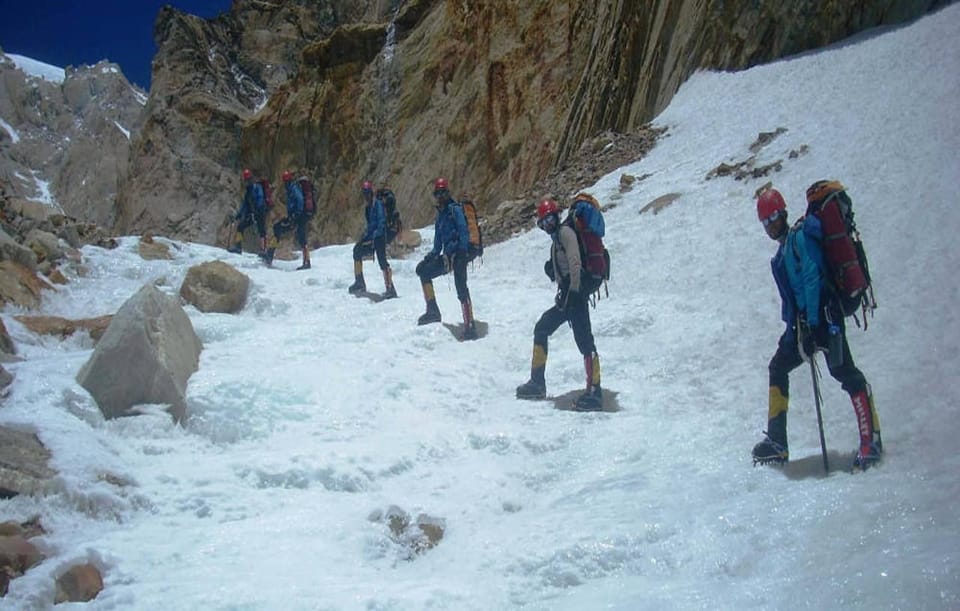
Mt. Abi, towering at 6,097 meters, offers climbers a unique blend of challenging ice climbing and breathtaking views in Nepal’s majestic Mahalangur region.
This peak, with a base elevation of 5,355 meters, is ideal for those looking to practice moderate ice climbing skills while enjoying stunning landscapes.
Climbers encounter technical sections on ridges, demanding focus and precision. The ascent provides excellent acclimatization opportunities, making it a popular choice for those preparing for higher peaks in the Himalayas.
With its combination of adventure and natural beauty, Mt. Abi isn’t just a climb; it’s an experience that leaves lasting memories for those who dare to conquer its icy slopes.
Adventure awaits at every turn on this remarkable expedition.
Climbing Itinerary
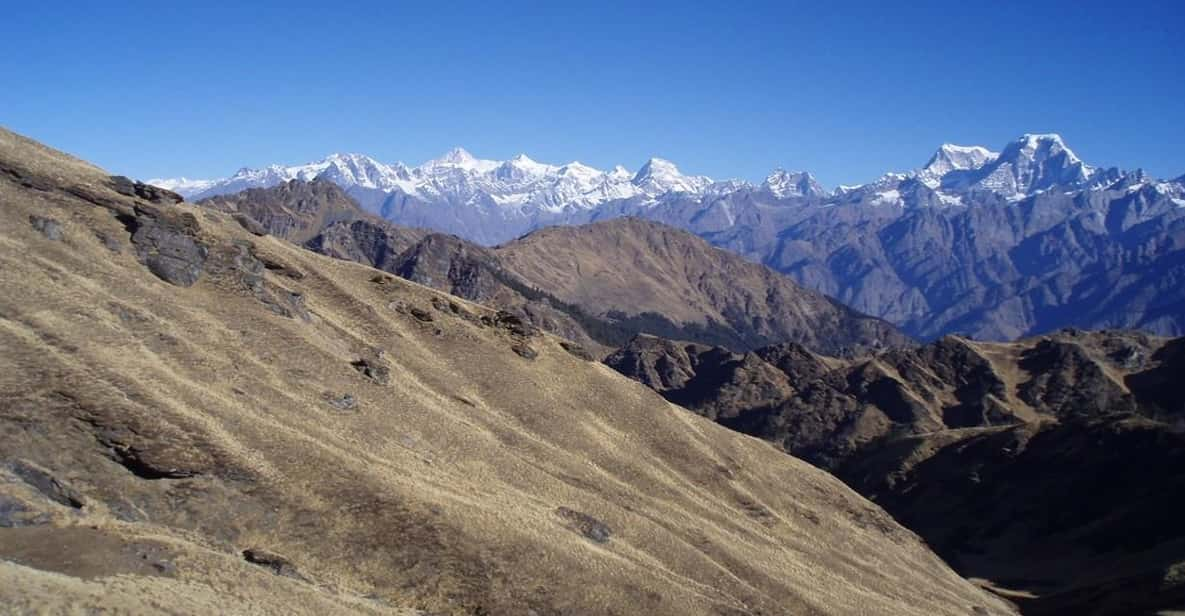
The climbing itinerary for Abi Peak spans 12 days, meticulously designed to balance adventure and proper acclimatization while guiding climbers through breathtaking landscapes.
It begins with a scenic flight from Kathmandu to Lukla, followed by a trek to Chutanga.
The team continues trekking through picturesque locations like Thuli Kharka and Kothe, eventually reaching Abi Base Camp at 5,355 meters.
After a day of preparation at High Camp, climbers make their summit attempt on Day 7, reaching 6,097 meters before descending back to Base Camp.
The itinerary concludes with a rewarding trek back through Dole and Namche Bazar, returning to Lukla for the flight back to Kathmandu.
Each day is crafted for optimal acclimatization and enjoyment of the stunning surroundings.
Adventure Highlights
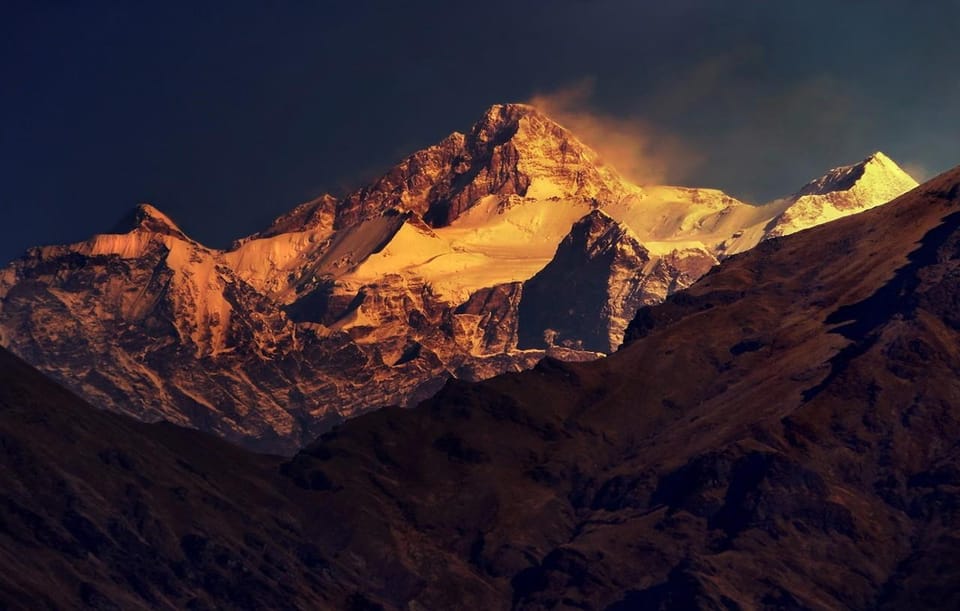
Adventurers can expect breathtaking views and exhilarating experiences while trekking through the stunning landscapes surrounding Abi Peak. The journey begins with a scenic flight from Kathmandu to Lukla, offering glimpses of the majestic Himalayas.
As trekkers ascend, they’ll navigate diverse terrains, from lush valleys to rugged mountain trails. Crossing the Cho La Pass at 5,420 meters presents a thrilling challenge, rewarding climbers with panoramic vistas of iconic peaks like Everest and Lhotse.
The trek also includes a hike to Gokyo-Ri, where the stunning turquoise lakes and soaring mountains create unforgettable memories. With each step, climbers gain confidence and skills in ice climbing, setting the stage for a triumphant summit of Mt. Abi, a true adventure epic.
Included Services
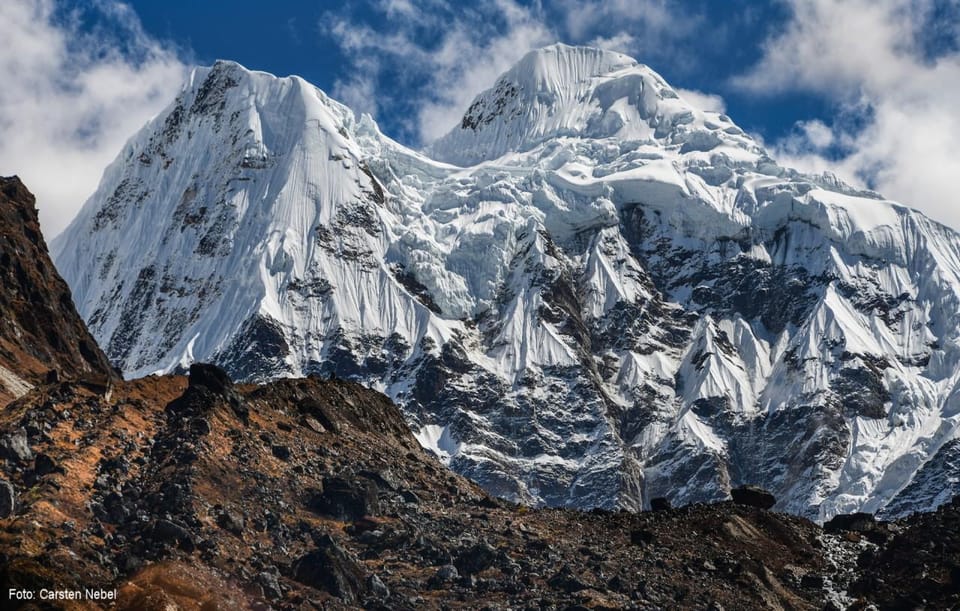
Included in the adventure are essential services that ensure a seamless and enjoyable experience during the Mt. Abi trek.
Participants can expect comprehensive land transportation, including airport transfers and trekking logistics.
Accommodations consist of four nights in a Kathmandu hotel, complete with breakfast, and twin-sharing lodging throughout the trek.
The itinerary includes three hearty meals daily, complemented by a tented camp at Base Camp featuring North Face brand tents.
A professional English-speaking guide, experienced cook, and dedicated porters accompany trekkers, providing invaluable support.
All necessary climbing gear, permits, and entrance fees are covered, along with life insurance for the support crew.
These services collectively enhance the trekking experience, allowing adventurers to focus on the breathtaking journey ahead.
Exclusions and Costs
Understanding the exclusions and associated costs is crucial for trekkers planning their Mt. Abi adventure, as it helps them prepare for the financial aspects of the journey. While many services are included, several expenses remain the trekker’s responsibility.
Key exclusions to consider include:
-
Personal expenses like meals in Kathmandu and trekking gear.
-
Emergency evacuation costs and any drinks beyond tea or coffee.
-
Visa fees, airport taxes, and personal travel insurance.
Climbing Preparation
Climbing preparation for Mt. Abi involves a combination of physical training, gear selection, and acclimatization strategies to ensure trekkers are ready for the challenges ahead.
First, trekkers should engage in a structured fitness regimen focusing on cardiovascular endurance, strength training, and flexibility. This helps build the stamina necessary for high-altitude trekking.
Next, selecting appropriate gear is crucial; this includes well-fitting boots, layered clothing, and essential accessories for ice climbing.
Lastly, acclimatization is vital to prevent altitude sickness. Trekkers should spend adequate time at base camp and gradually ascend to higher elevations, allowing their bodies to adjust.
Essential Gear
To tackle the challenges of Mt. Abi, climbers need to equip themselves with the right gear that not only ensures safety but also enhances their performance on the ice and rocky terrain.
Essential gear includes:
-
Crampons: Vital for gripping icy surfaces, providing stability during ascents.
-
Ice Axe: Crucial for self-arrest and navigating steep sections effectively.
-
Layered Clothing: Keeps climbers warm and dry, allowing for mobility in varying temperatures.
Having the appropriate equipment is key to a successful climb.
Climbers should also ensure their gear is well-maintained and suited for the harsh conditions expected on Mt. Abi.
With the right tools, they can focus on the adventure ahead, confident in their preparation.
Safety and Acclimatization
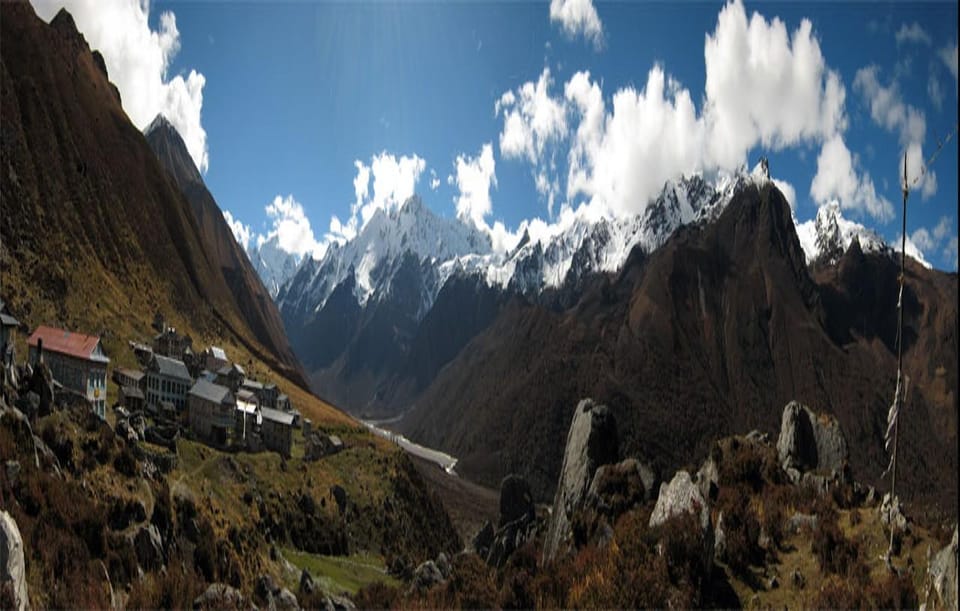
Safety and acclimatization play crucial roles in ensuring a successful ascent of Mt. Abi, as climbers must adapt to high altitudes while minimizing risks associated with extreme conditions.
To combat altitude sickness, climbers should follow a gradual ascent schedule, allowing their bodies to adjust to decreasing oxygen levels. Staying hydrated and maintaining a balanced diet are essential for overall health during the trek.
It’s also important for climbers to be aware of weather conditions, as sudden changes can pose significant dangers. Experienced guides monitor climbers’ health closely, ensuring everyone stays fit and safe.
Here's a few more nearby tours and experiences we think you'll like.
Frequently Asked Questions
What Is the Best Time of Year to Climb Mt. Abi?
The best time to climb is during spring, typically from April to May, when weather conditions are stable. Climbers appreciate clear skies and moderate temperatures, making their ascent enjoyable and safer for summiting challenging peaks.
Are There Age Restrictions for Climbing Mt. Abi?
There aren’t strict age restrictions for climbing, but participants typically should be at least 16 years old. Guides often recommend physical fitness and prior experience, ensuring climbers can safely navigate challenging terrain and conditions.
What Is the Average Success Rate for Summiting Mt. Abi?
The average success rate for summiting peaks of similar difficulty typically hovers around 60-70%. Climbers prepare thoroughly, focusing on acclimatization and technical skills, which significantly impacts their chances of reaching the summit successfully.
Can Beginners Participate in the Climb?
Yes, beginners can participate in the climb. With moderate ice climbing skills required and proper guidance, they’ll gain valuable experience. The itinerary also emphasizes acclimatization, ensuring a safer and more enjoyable adventure for novice climbers.
Are There Any Cultural Considerations While Trekking in the Region?
While trekking in the region, travelers should respect local customs, dress modestly, and seek permission before photographing people. Engaging with the community fosters goodwill and enhances the overall experience, making the journey more meaningful.
Not for you? Here's more of our most recent tour reviews happening neaby
- Mt.Cholatse Expedition
- Makalu Circuit Trek
- Mt.Phari Lapcha Peak Climbing
- From Lukla: 11 Day Everest Base Camp With Kala Patthar Trek
- Everest View Trek 5 Days
- From Kathmandu: Luxury 16 Days Everest Base Camp Trek
- Everest View Trekking, Everest Panorama Trekking in Nepal
- Everest Base Camp Trek
- Everest Base Camp Trek and Return via Helicopter
- Everest View Trek Nepal
- Everest Base Camp Trek – Nepal
- Everest Trekking
- Everest Base Camp Trek
- Chola Pass Trek – 15 Days
- Top of the World – Nepal – 12 Days Everest Base Camp Trek
Recap
To sum it up, Mt. Abi stands as a captivating destination for climbers seeking adventure and breathtaking scenery.
With a well-planned itinerary that prioritizes acclimatization and safety, adventurers can tackle its technical challenges with confidence.
From the stunning landscapes to the thrill of reaching the summit, every moment spent on this majestic mountain promises unforgettable memories.
Whether you’re a seasoned climber or an enthusiastic beginner, Mt. Abi offers an exhilarating experience that beckons to be explored.
